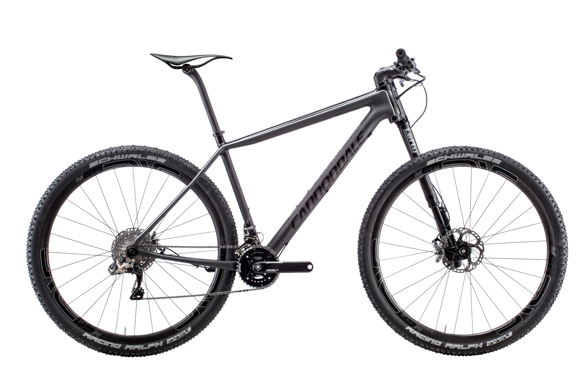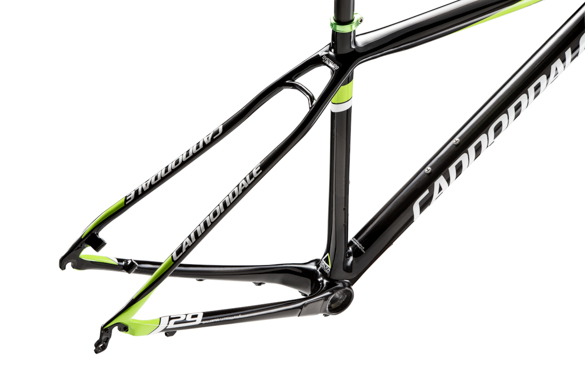First look: Cannondale’s no-compromise F-Si 29 race rocket hardtail
Originally posted on June 3, 2014 at 9:19 am
To the casual spectator, it may seem that World Cup level XC racing is more about lung capacity than technical innovation. After all, aside from being light weight, the bikes don’t need to do anything complex, right?
Not exactly. And that’s where the new Cannondale F-Si comes in. Yes, it’s one of the lightest, stiffest hardtails on the market, but it also introduces a host of new features and technologies that—in the Cannondale tradition—set it far apart from the competitors.
Ai Drivetrain

The most interesting design feature is the asymmetric, offset rear end. By shifting the hub and drivetrain 6mm to the right, Cannondale was able to create super short chain stays (429mm/16.9 inches) while creating an even stiffer structure thanks to the equal spoke tension on both sides of the wheel. After all, the rim stays centered, but the hub is offset towards the drive side.
According to Cannondale, this creates a 60 percent stiffer rear wheel with tons of mud clearance and still allow for dual chainrings and super-short chain stays.
System 29 geometry

Having even the lightest, stiffest frame is useless if the geometry is all wrong. Cannondale is now pushing the boundaries of XC geometry with super short chainstays and a slack 69.5 degree head tube angle. But before you start calling this a trail bike, note that the Lefty 2.0 comes with a much longer 55mm offset to give it a better balance of stability and speed. It also has 620mm of bottom bracket drop for an effective height of 12.1 inches.

Lefty 2.0

While Cannondale recently upped the ante on Lefty use with the SuperMax, the Lefty 2.0 goes the other direction with a no-compromise focus on racing. The new Lefty uses the larger offset to give both high speed stability and low speed agility. It has a new XC damper adapted from the SuperMax but retuned for racing. It is available with either pushbutton or handlebar remote lockout controls.
SAVE technology

SAVE is Cannondale’s take on comfort and control through eliminating vibrations. By manipulating the carbon layups and tube shapes, the frame can better achieve that vaunted “laterally stiff and vertically compliant” status. The Save 2 seat post adds into that equation, increasing compliance 20 percent over the previous version.
Racer-friendly features

- Full-length, external cable routing for easy cable changing and servicing.
- Quick release rear wheel for faster wheel changes and a lighter overall system.
- Di2 compatible with wire-routing ports and internal battery placement.
Ride one

No word yet on pricing or availability, but we expect the bikes to be available to consumers this summer. There will be four models, from the full-bling F-Si Blank Inc. model with XTR Di2 to the F-Si Team (SRAM XX1), F-Si 1 (XTR/XT mix with a SRAM front derailleur for some reason) and F-Si 2 (SRAM XO1) models.
In action
Few people realize that road superstar Peter Sagan got his start in mountain biking. In 2009, he was teammates with Marco Fontana on the Cannondale Factory Racing team.
This past winter, Peter and Marco reconnected on familiar trails aboard the all-new bike.